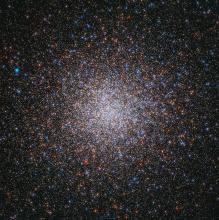Listen to today's episode of StarDate on the web the same day it airs in high-quality streaming audio without any extra ads or announcements. Choose a $8 one-month pass, or listen every day for a year for just $30.
You are here
Starburst
Summer is the best time of year to seek out the Milky Way — the hazy band of light that outlines the disk of our home galaxy. If you can find an especially dark skywatching site as night falls, you’ll see it arcing from teapot-shaped Sagittarius in the south, through the swan high in the east, and over to W-shaped Cassiopeia in the northeast.
If you’d been around a few billion years ago, though, the view wouldn’t have been nearly as impressive. The galaxy’s disk might have contained only half as many stars as it does today.
Researchers looked at observations from Gaia, a spacecraft that’s been measuring a billion stars. The observations show how different types of stars are spread through the galaxy. That tells astronomers when and where the stars were born.
From that, the researchers concluded that the galaxy began giving birth to many stars about five billion years ago. By a couple of billion years later, the Milky Way might have been producing 10 times as many stars as it does now. In fact, that outburst could have produced half of the stars we see today.
The outburst might have been triggered by a merger with another galaxy. The merger would have brought in a lot of gas — the raw material for making stars. It also would have squeezed big clouds of gas, causing them to form stars.
Things have settled down over the last billion years or so. Today, the Milky Way gives birth to the equivalent of one Sun-sized star per year — a lull after a busy outburst.
Script by Damond Benningfield




